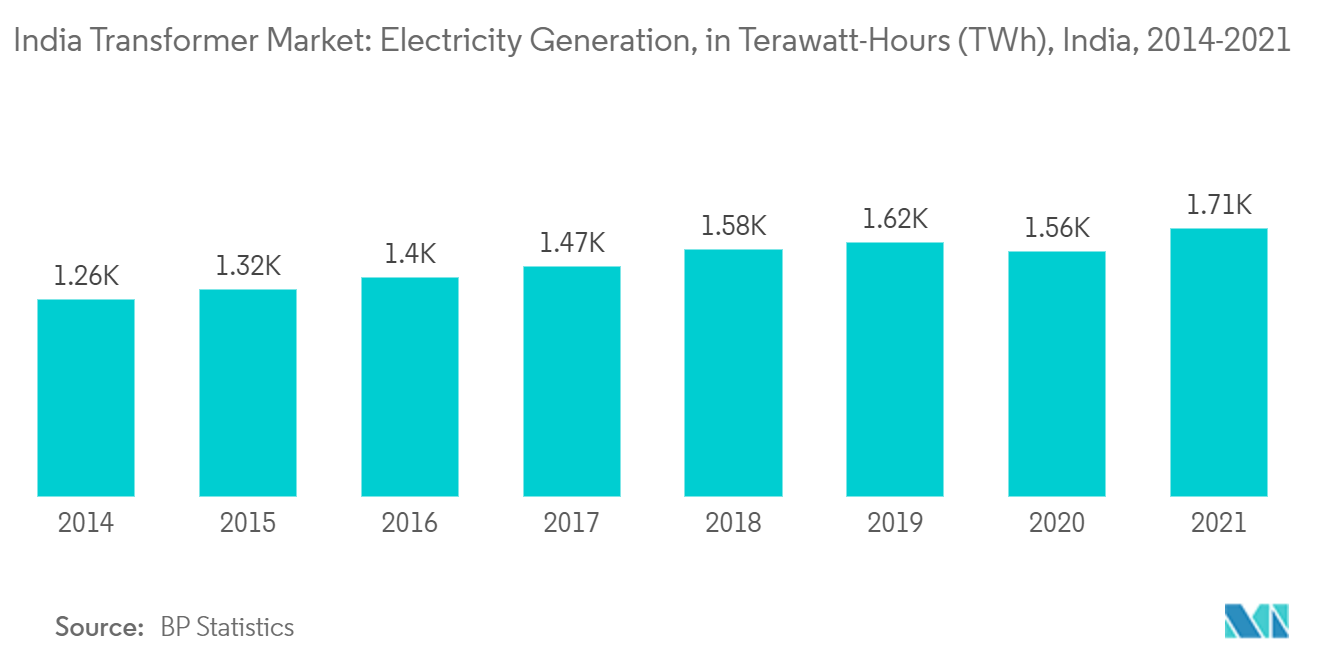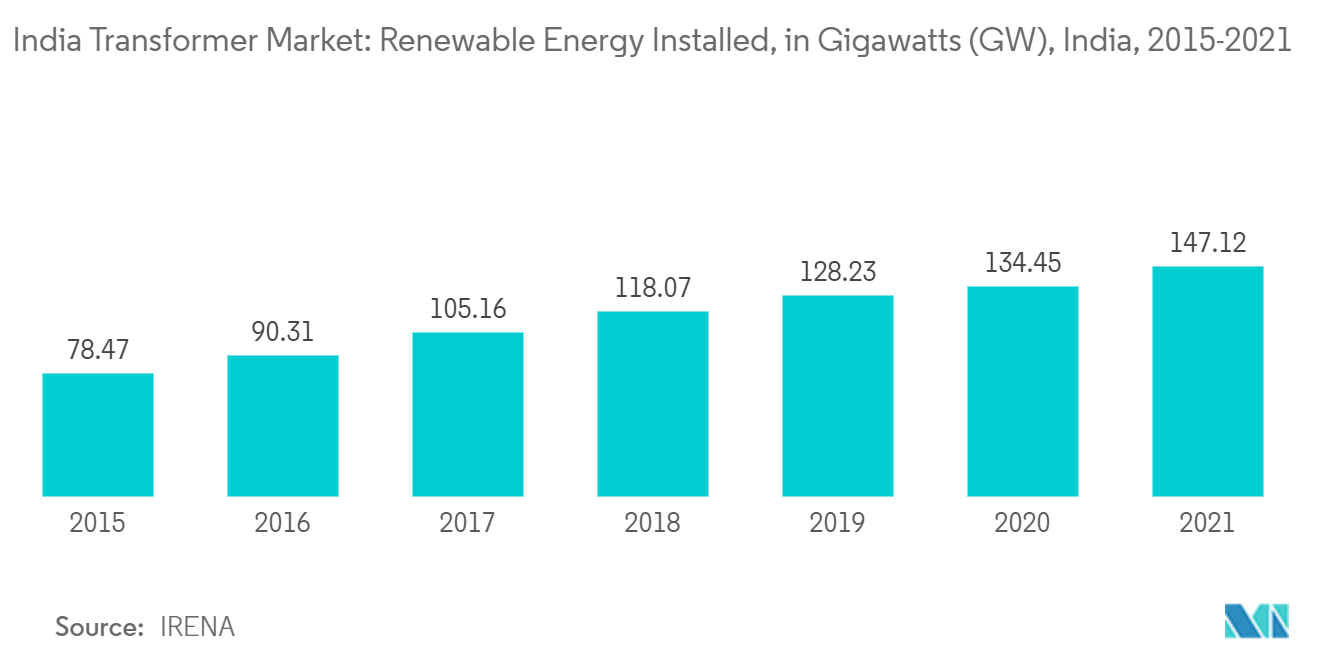Market Trends of India Transformer Industry
Distribution Transformer Expected to Dominate the Market
- A distribution transformer or service transformer is utilized in the electric power distribution system to facilitate the final voltage transformation. Its primary function is to decrease the voltage from the distribution lines to a level suitable for residential, commercial, and industrial customers.
- India, because of its rapidly increasing urbanization and industrialization, is expanding its existing transmission and distribution system by laying new transmission lines and installing new substations to fill the energy demand-supply gap in the country.
- In 2021, the electricity generation for India was about 1714.8 Terawatt-Hour (TWh), which was higher than what the country produced in 2020, 1563.3 TWh. The increase in electricity generation exhibits an increase in the power generation capacity, which is likely to use new distribution transformers for the transmission of electricity to consumers.
- In January 2022, the Government of India approved Green Energy Corridor (GEC) Phase - II. It will facilitate grid integration and power evacuation of approximately 20 GW of Renewable Energy (RE) power projects in seven states: Gujrat, Himachal Pradesh, Karnataka, Kerala, Rajasthan, Tamil Nadu, and Uttar Pradesh. The estimated investment in the phase is USD 1.44 billion. Under this phase, 10,750 kilometers of transmission lines will be constructed, and 27,500 MVA substations are being planned to be added.
- In February 2021, the Indian Government signed a loan agreement of USD 304 million from the Asian Development Bank (ADB) for the development of the Assam Intra-State Transmission System Enhancement project, which aims to improve the reliability, capacity, and security of the power transmission network in the northeastern state of Assam. This followed ADB's USD 190 million loans for the upgradation and modernization of Bengaluru's power distribution system in December 2020 and a USD 132.8 million loan for improving the power distribution network in the northeastern state of Meghalaya.
- Hence, owing to the above points, the distribution transformer segment is likely to dominate the Indian transformer market during the forecast period.

Favorable Government Policies Expected to Drive the Market
- India's power sector is undergoing a wide-scale transformation, owing to the country facing steep electricity demand growth rates. Several parts of India witness high power cuts due to the growing demand for electricity and the supply gap. To address the issue of electricity reliability, the government has implemented policies to increase electricity generation and encourage consumers to reduce their consumption during peak hours.
- In recent years, the government has launched several schemes, such as the Deen Dayal Upadhyaya Gram Jyoti Yojana (DDUGJY), Integrated Power Development Scheme (IPDS), and National Electricity Fund (NEF), to improve the distribution sector in the rural and urban areas, which is expected to drive the demand for transformers in India.
- Moreover, transformers produced in the country have been brought under mandatory Bureau of Indian Standards (BIS) certification that has resulted in the standardization of the product, which has led to quality improvement and reduction of failure in transformers. These transformers have been brought under a mandatory BEE star labeling scheme, which has resulted in the use of modern technology in manufacturing energy-efficient transformers.
- Moreover, government policies towards the rapid increase in renewable energy installations at different sites that require transformers of step-up and step-down of the electrical voltage that is being transferred through it will likely drive the market. In 2021, the total renewable energy installation in the country was 147.12 gigawatts (GW), which is higher than its installation in 2020, 134.45 gigawatts (GW).
- Hence, owing to the above points, government policies are expected to drive the India transformer market during the forecast period.


